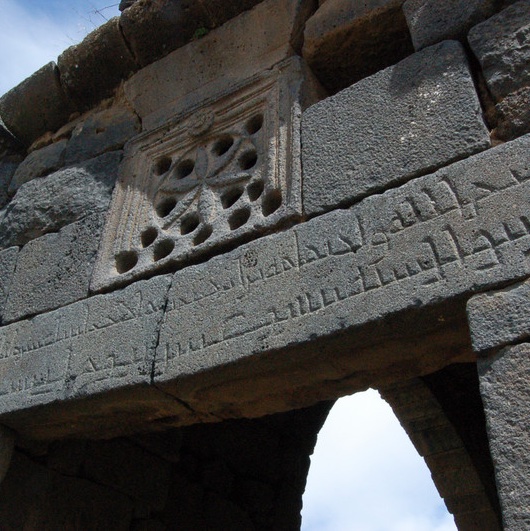Tomek discusses the epigraphical landscape of early Islamic Izra (southern Syria)

On 9 June 2022, Tomek gave a talk “The epigraphical landscape of Izra (southern Syria) in the Islamic period” during the conference “Poles in the Near East. An Archaeological Conference [Polacy na Bliskim Wschodzie. Konferencja Archaeologiczna]” organized by the Polish Centre of Mediterranean Studies, University of Warsaw.
Abstract: Numerous Greek inscriptions were written in Hauran in Antiquity, including at Ezraʾ, located on the western periphery of the rocky region of Trachonitis, known in Arabic as al-Lajāʾ. The most important of these inscriptions, concern two churches, that of St. George (Mār Ǧirǧis) and that of the Prophet Elijah (Mār Ilyās), both of which are dated to the 6th century AD. Both religious buildings, which are also in use in modern times, functioned in the landscape of this city in the time following the Arab conquest of the 7th century AD. Epigraphic material in Arabic at Ezraʾ is less numerous and concentrated primarily in one building. This architectural structure, the history of which is the focus of my research, is referred to as the Umar Mosque, a reference to the figure of the second of the so-called Righteous Caliphs, who ruled from 634 to 644 AD. However, the first certain evidence of the existence of a mosque at this site is a much later, Ayyubid inscription from the mid-13th century AD. Other sources including epigraphic texts and later travel accounts suggest that this building served commercial purposes and perhaps even as a Christian church. However, the most surprising epigraphic monument in this building is an Arabic inscription commemorating a birth from the 222nd year of the Muslim calendar, i.e. 837 AD. This unique commemoration invites to put forward several hypotheses about the reason for the construction of this monument. These inquiries are intended to identify the person or social group interested in this type of commemoration.
The talk is based on a paper which will be published within a year’s time.
Image: Ross Burns, Ezraa. License: CC BY-NC-SA 2.0. Source: Manar Al-Athar.